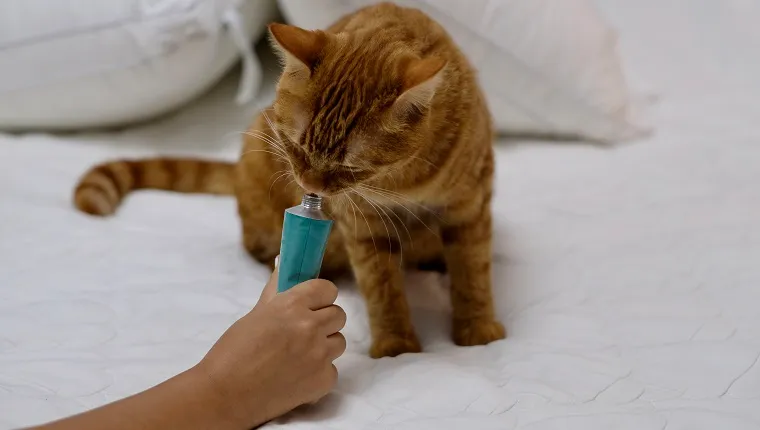Hello there, fellow cat aficionados! Today, we’re going to talk about a cat’s not-so-secret weapon against hairballs: Laxatone. This gooey, tasty treat is a game-changer for many feline friends. But how do you use it, how much should you give, and are there any side effects? We’ve got all the answers backed by the wisdom of veterinarians and government bodies.
What Is Laxatone?
The Lowdown on Laxatone
Laxatone is a trusted brand of cat hairball remedy. It’s essentially a flavored gel that helps your kitty deal with those pesky hairballs. Cats groom themselves excessively, and Laxatone comes to the rescue by lubricating their digestive tract, making it easier for hairballs to pass through.
Vet-Recommended
Veterinarians often recommend Laxatone for cats who are prone to hairballs, especially long-haired breeds like Maine Coons and Persians. It’s safe, effective, and easy to administer, which is music to any cat owner’s ears.
How to Use Laxatone
Dosage Guidelines
Wondering how much Laxatone to give your cat? The general rule of thumb is to provide a half to one inch of Laxatone daily, either directly from the tube or by placing it on your cat’s paw for them to lick off. Follow your vet’s recommendations, as they may suggest a specific dosage based on your cat’s size and needs.
Frequency Matters
Laxatone is not a one-time wonder. To prevent hairballs, it’s typically given 2-3 times a week, but your vet may advise differently depending on your cat’s situation.
Flavored Options
Laxatone comes in various flavors, like malt or tuna. Experiment to find the one your cat loves most, as they’re more likely to gobble it up willingly.
When to Use Laxatone
Preventing Hairballs
The primary use of Laxatone is to prevent hairballs from forming in your cat’s stomach. Regular use can help your cat pass hairballs naturally, reducing the risk of blockages and discomfort.
During Shedding Seasons
Consider increasing Laxatone during shedding seasons when your cat is likely to ingest more fur. This can be especially helpful for long-haired breeds or cats who groom excessively.
Potential Side Effects
Generally Safe
Laxatone is generally safe for cats when used as directed. However, like any product, it can have side effects in rare cases. These may include diarrhea or vomiting.
Allergic Reactions
While uncommon, some cats may have allergic reactions to Laxatone. Watch out for signs like itching, swelling, or difficulty breathing. If you notice these, contact your vet immediately.
Diabetic Cats
If your cat has diabetes or is on a restricted diet, consult your vet before using Laxatone, as it contains sugar.
Conclusion
In the world of cat care, Laxatone is a tried-and-true ally against hairballs. Remember, it’s essential to follow your veterinarian’s advice on its usage and dosage. With Laxatone by your side, you can keep your feline friend’s tummy comfortable and hairball-free. Here’s to happy cats and hairball-free cuddles!
- Best Lusha Alternatives for 2025 - April 19, 2025
- Best Overloop Alternatives for 2025 - April 19, 2025
- Best Snov.io Alternatives for 2025 - April 18, 2025



